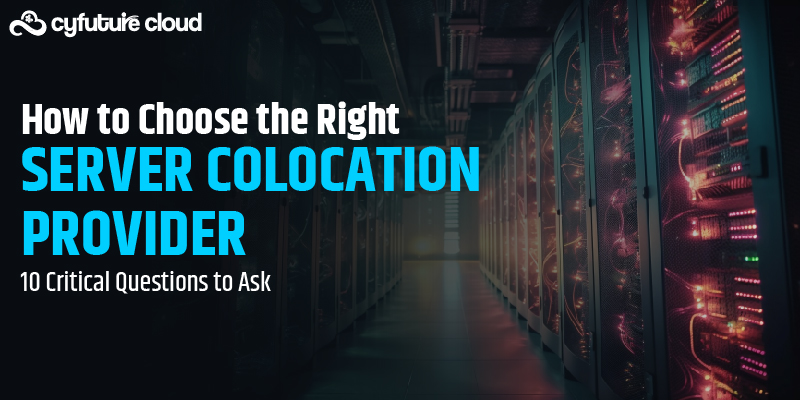Get 69% Off on Cloud Hosting : Claim Your Offer Now!
- Products
-
Compute
Compute
- Predefined TemplatesChoose from a library of predefined templates to deploy virtual machines!
- Custom TemplatesUse Cyfuture Cloud custom templates to create new VMs in a cloud computing environment
- Spot Machines/ Machines on Flex ModelAffordable compute instances suitable for batch jobs and fault-tolerant workloads.
- Shielded ComputingProtect enterprise workloads from threats like remote attacks, privilege escalation, and malicious insiders with Shielded Computing
- GPU CloudGet access to graphics processing units (GPUs) through a Cyfuture cloud infrastructure
- vAppsHost applications and services, or create a test or development environment with Cyfuture Cloud vApps, powered by VMware
- Serverless ComputingNo need to worry about provisioning or managing servers, switch to Serverless Computing with Cyfuture Cloud
- HPCHigh-Performance Computing
- BaremetalBare metal refers to a type of cloud computing service that provides access to dedicated physical servers, rather than virtualized servers.
-
Storage
Storage
- Standard StorageGet access to low-latency access to data and a high level of reliability with Cyfuture Cloud standard storage service
- Nearline StorageStore data at a lower cost without compromising on the level of availability with Nearline
- Coldline StorageStore infrequently used data at low cost with Cyfuture Cloud coldline storage
- Archival StorageStore data in a long-term, durable manner with Cyfuture Cloud archival storage service
-
Database
Database
- MS SQLStore and manage a wide range of applications with Cyfuture Cloud MS SQL
- MariaDBStore and manage data with the cloud with enhanced speed and reliability
- MongoDBNow, store and manage large amounts of data in the cloud with Cyfuture Cloud MongoDB
- Redis CacheStore and retrieve large amounts of data quickly with Cyfuture Cloud Redis Cache
-
Automation
Automation
-
Containers
Containers
- KubernetesNow deploy and manage your applications more efficiently and effectively with the Cyfuture Cloud Kubernetes service
- MicroservicesDesign a cloud application that is multilingual, easily scalable, easy to maintain and deploy, highly available, and minimizes failures using Cyfuture Cloud microservices
-
Operations
Operations
- Real-time Monitoring & Logging ServicesMonitor & track the performance of your applications with real-time monitoring & logging services offered by Cyfuture Cloud
- Infra-maintenance & OptimizationEnsure that your organization is functioning properly with Cyfuture Cloud
- Application Performance ServiceOptimize the performance of your applications over cloud with us
- Database Performance ServiceOptimize the performance of databases over the cloud with us
- Security Managed ServiceProtect your systems and data from security threats with us!
- Back-up As a ServiceStore and manage backups of data in the cloud with Cyfuture Cloud Backup as a Service
- Data Back-up & RestoreStore and manage backups of your data in the cloud with us
- Remote Back-upStore and manage backups in the cloud with remote backup service with Cyfuture Cloud
- Disaster RecoveryStore copies of your data and applications in the cloud and use them to recover in the event of a disaster with the disaster recovery service offered by us
-
Networking
Networking
- Load BalancerEnsure that applications deployed across cloud environments are available, secure, and responsive with an easy, modern approach to load balancing
- Virtual Data CenterNo need to build and maintain a physical data center. It’s time for the virtual data center
- Private LinkPrivate Link is a service offered by Cyfuture Cloud that enables businesses to securely connect their on-premises network to Cyfuture Cloud's network over a private network connection
- Private CircuitGain a high level of security and privacy with private circuits
- VPN GatewaySecurely connect your on-premises network to our network over the internet with VPN Gateway
- CDNGet high availability and performance by distributing the service spatially relative to end users with CDN
-
Media
-
Analytics
Analytics
-
Security
Security
-
Network Firewall
- DNATTranslate destination IP address when connecting from public IP address to a private IP address with DNAT
- SNATWith SNAT, allow traffic from a private network to go to the internet
- WAFProtect your applications from any malicious activity with Cyfuture Cloud WAF service
- DDoSSave your organization from DoSS attacks with Cyfuture Cloud
- IPS/ IDSMonitor and prevent your cloud-based network & infrastructure with IPS/ IDS service by Cyfuture Cloud
- Anti-Virus & Anti-MalwareProtect your cloud-based network & infrastructure with antivirus and antimalware services by Cyfuture Cloud
- Threat EmulationTest the effectiveness of cloud security system with Cyfuture Cloud threat emulation service
- SIEM & SOARMonitor and respond to security threats with SIEM & SOAR services offered by Cyfuture Cloud
- Multi-Factor AuthenticationNow provide an additional layer of security to prevent unauthorized users from accessing your cloud account, even when the password has been stolen!
- SSLSecure data transmission over web browsers with SSL service offered by Cyfuture Cloud
- Threat Detection/ Zero DayThreat detection and zero-day protection are security features that are offered by Cyfuture Cloud as a part of its security offerings
- Vulnerability AssesmentIdentify and analyze vulnerabilities and weaknesses with the Vulnerability Assessment service offered by Cyfuture Cloud
- Penetration TestingIdentify and analyze vulnerabilities and weaknesses with the Penetration Testing service offered by Cyfuture Cloud
- Cloud Key ManagementSecure storage, management, and use of cryptographic keys within a cloud environment with Cloud Key Management
- Cloud Security Posture Management serviceWith Cyfuture Cloud, you get continuous cloud security improvements and adaptations to reduce the chances of successful attacks
- Managed HSMProtect sensitive data and meet regulatory requirements for secure data storage and processing.
- Zero TrustEnsure complete security of network connections and devices over the cloud with Zero Trust Service
- IdentityManage and control access to their network resources and applications for your business with Identity service by Cyfuture Cloud
-
-
Compute
- Solutions
-
Solutions
Solutions
-
 Cloud
Hosting
Cloud
Hosting
-
 VPS
Hosting
VPS
Hosting
-
GPU Cloud
-
 Dedicated
Server
Dedicated
Server
-
 Server
Colocation
Server
Colocation
-
 Backup as a Service
Backup as a Service
-
 CDN
Network
CDN
Network
-
 Window
Cloud Hosting
Window
Cloud Hosting
-
 Linux
Cloud Hosting
Linux
Cloud Hosting
-
Managed Cloud Service
-
Storage as a Service
-
 VMware
Public Cloud
VMware
Public Cloud
-
 Multi-Cloud
Hosting
Multi-Cloud
Hosting
-
 Cloud
Server Hosting
Cloud
Server Hosting
-
 Bare
Metal Server
Bare
Metal Server
-
 Virtual
Machine
Virtual
Machine
-
 Magento
Hosting
Magento
Hosting
-
Remote Backup
-
 DevOps
DevOps
-
 Kubernetes
Kubernetes
-
 Cloud
Storage
Cloud
Storage
-
NVMe Hosting
-
 DR
as s Service
DR
as s Service
-
-
Solutions
- Marketplace
- Pricing
- Resources
- Resources
-
By Product
Use Cases
-
By Industry
- Company
-
Company
Company
-
Company
Why is SASE today’s most important trend in cloud computing?
Table of Contents
Over the past ten years, the usage of cloud computing has increased. Cloud computing has experienced a boom in use and development over the past several years as well. All of this comes full circle back to the ongoing epidemic, which compelled several workers to adopt technology and the work-from-home paradigm. The cloud model is crucial for maintaining and expanding the workforce changes.
Definition of SASE
A cloud-based IT approach called Secure Access Service Edge, or SASE, unifies network security and software-defined networking operations under the control of a single service provider. The word “SASE” was created in 2019 by Gartner, a multinational research and consultancy company.
Modern, internationally dispersed enterprises require the improved control and visibility that a SASE strategy provides over the users, traffic, and data that are accessed by a corporate network. SASE-based networks may link geographically dispersed employees and offices in any place using any device since they are adaptable and expandable.
How does SASE function?
SASE, as previously noted, combines your network design with network security, such as SaaS or Zero Trust, to produce a single, cloud-based solution. Technology for managing network traffic and technology for managing network security are the two separate parts of the technology used by SASE.
SASE locates the controls for controlling network traffic outside of the data center, at the cloud edge. By extending your network perimeter to remote users, devices, and applications, this edge renders VPNs unnecessary. As the services become more simplified and integrated, this form of network traffic control can minimize latency.
The sessions are often created to contain a range of significant network security features, including identity-based access, zero trust restrictions, and more. Before allowing access, the identity of the user or device is confirmed during a connection request, and predefined compliance and security measures are enforced. To maintain security, risk assessments are conducted continuously while keeping an eye on things like the device’s condition or the resource’s sensitivity.
In what ways does SASE differ from conventional networking?
Data and applications are housed in a central data center in a conventional network arrangement. Users, branch offices, and apps connect to the data center via a localized private network or another network that often links to the major one through a secure leased line or VPN to access those resources.
The development of distributed workforces and the complexity brought on by cloud-based services like software-as-a-service (SaaS) have shown this approach to be unprepared to manage them. If apps and data are housed in the cloud, it is no longer practicable to redirect all traffic through a single data center.
What are the four main SASE security elements?
Four essential security elements make up SASE:
Safe web gateways (SWG): An SWG guards against online risks and data breaches by filtering undesirable web traffic, preventing unauthorized user activity, and enforcing organizational security guidelines. SWGs are the best choice for safeguarding remote workforces since they can be set up anywhere.
Security broker for cloud access (CASB): A CASB handles several security tasks for cloud-hosted services, such as exposing shadow IT (unauthorized business systems), protecting sensitive data through access control and data loss prevention (DLP), and guaranteeing compliance with data privacy laws.
Zero trust network access (ZTNA): ZTNA solutions need real-time authentication of each person and device attempting to access a protected application, locking off internal resources from public view and assisting in the defense against possible data breaches.
FWaaS: Firewalls provided as a service from the cloud are referred to as firewalls-as-a-service (FWaaS). FWaaS defends against online threats to cloud-based platforms, networks, and software. In contrast to conventional firewalls, FWaaS is not a physical device but rather a collection of security features that include URL filtering, intrusion prevention, and unified policy administration across all network traffic.
Benefits of SASE – Why is SASE Important?
The major three advantages of SASE have enhanced security, larger cost savings, and improved performance.
Fast and efficient performance
This method of building network architecture is very effective and versatile. From any location, all of your workers may easily and securely connect to all the resources they require. You may simply grow this approach to meet your changing requirements as additional team members are added or as more apps are added. SASE reduces the number of security solutions your company requires and combines them into a single service, resulting in time savings, integration advantages, and administrative ease. Additionally, as network traffic follows the edge of the cloud and employs route optimization, it can reduce latency and slow performance.
Additional Cost Savings
Reduce the number of third-party services that need to be acquired, monitored, and maintained by integrating security services directly into your network architecture. Your IT team can manage both the infrastructure and the security services within it with less time and effort by leveraging the one platform that SASE offers. All of these advantages result in immediate cost reductions for your business.
Strengthened Security
To allow for customization to your organization’s needs, SASE offers flexibility in the security services that may be incorporated. You may incorporate many kinds of security services, such as threat protection, web filtering, sandboxing, data loss prevention, and more. Data protection policies can assist restrict access to sensitive data, and content inspection integration in SASE systems can help give more visibility and better security.
Conclusion
Your networking and network security tasks are combined into a single, cloud-based solution by SASE. The typical hub-and-spoke architecture, which gives your network advantages like decreased network latency, is not used in this network infrastructure model. The SASE technique can also save money, boost flexibility and performance, simplify network management and security, and enhance security. Building your SASE infrastructure may present some hurdles, but by coordinating your network and security specialists’ efforts and collaborating with a SASE supplier, you can assist to avoid any possible issues.
Recent Post

Stay Ahead of the Curve.
Join the Cloud Movement, today!
© Cyfuture, All rights reserved.
Send this to a friend

 Pricing
Calculator
Pricing
Calculator
 Power
Power
 Utilities
Utilities VMware
Private Cloud
VMware
Private Cloud VMware
on AWS
VMware
on AWS VMware
on Azure
VMware
on Azure Service
Level Agreement
Service
Level Agreement 


















